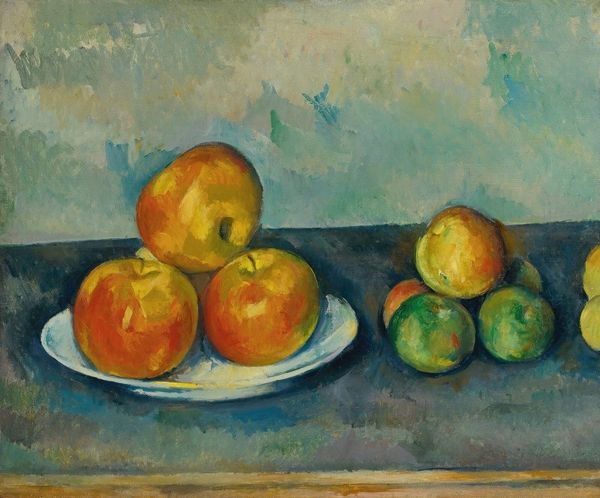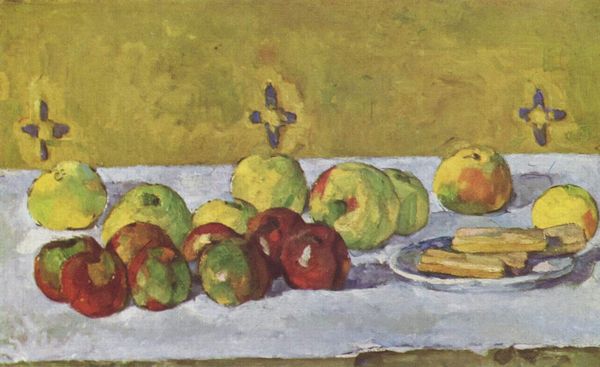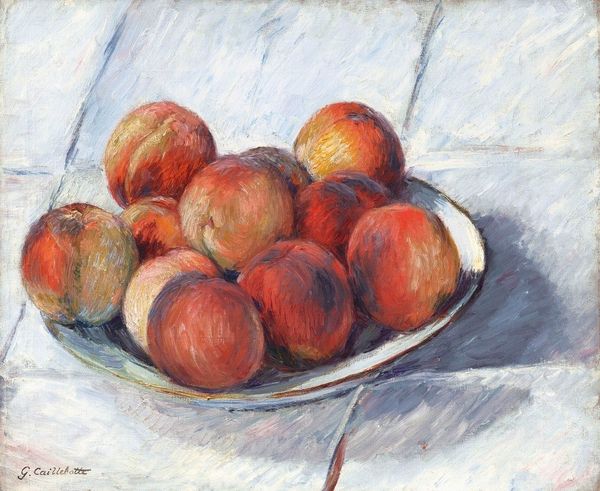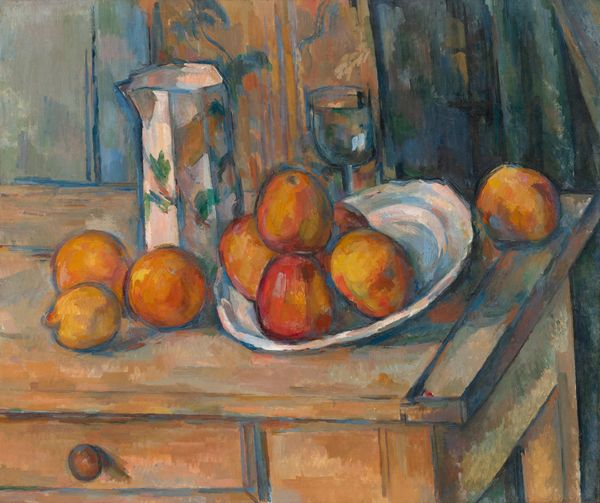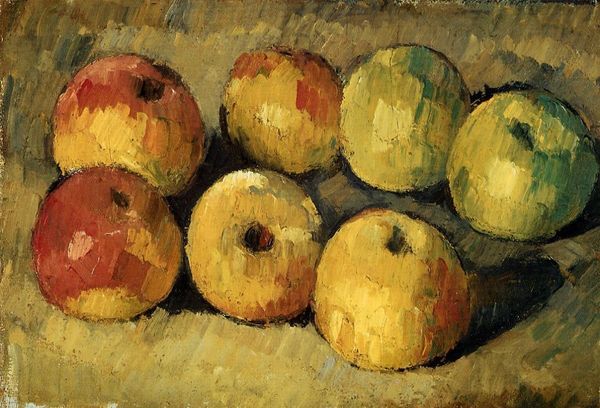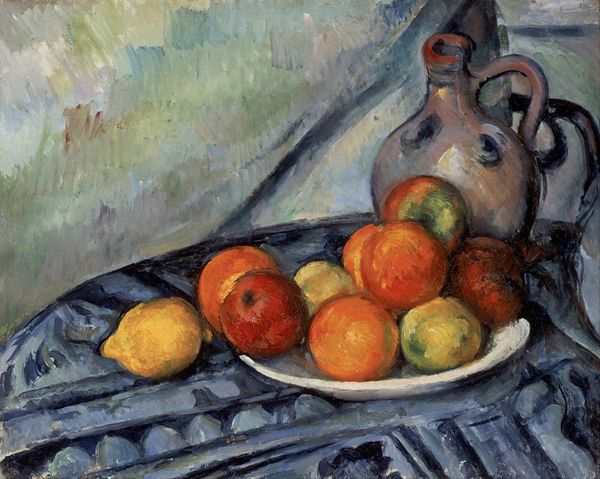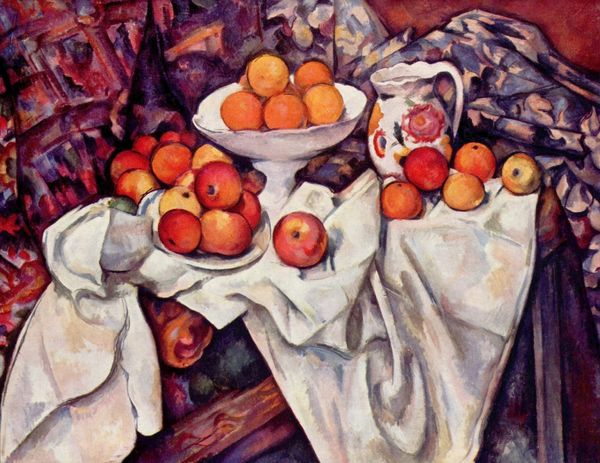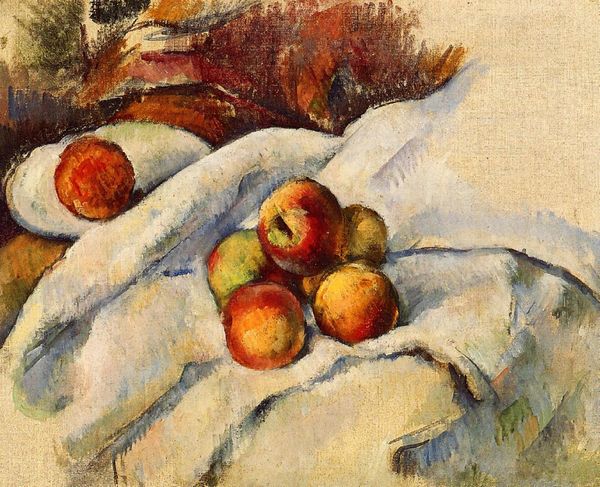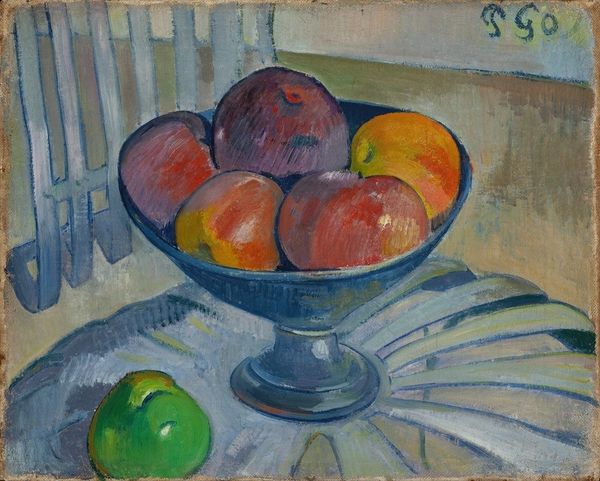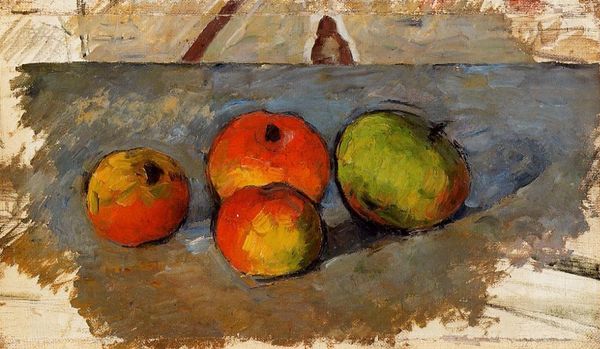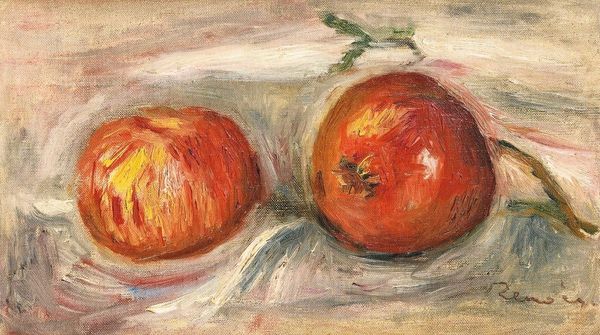
Copyright: Public Domain: Artvee
Curator: Looking at these apples, clustered together so naturally, I immediately feel invited into an intimate, domestic scene. Editor: I agree. There’s a certain earthiness that resonates. Tell me, what's the story of this still life? Curator: This painting, simply titled "Apples", was completed between 1878 and 1879 by Paul Cézanne. Its humble subject matter stands in stark contrast to the art world of the time, preoccupied as it was with grand historical paintings and portraiture. Yet the apple holds such profound symbolic weight. Think of the Garden of Eden, or even Aphrodite and the Golden Apple of Discord – symbols of desire, temptation, knowledge. What do these apples convey for you? Editor: My focus goes to his technique, his labor. I can really sense Cézanne experimenting with paint. The visible brushstrokes! That impasto! Look closely and you can follow the materiality and the processes on the surface—his careful build-up, layer by layer, of short, deliberate strokes in the oil paint. The painting surface declares its own presence, beyond simple illusion. How radical that must have seemed then. Curator: Absolutely, Cézanne's apples carry visual tension between the objective reality of an ordinary object and the artist's subjective response. Notice, too, how light and shadow interact not to render volume, but rather to dissolve and construct the form with equal measure. Each apple seems caught in the moment of becoming, both familiar and strange, as it references our inherited understanding. Editor: Yes, and I wonder about the economics of it, the choices he made, from canvas to oil pigment. Did local industry influence the color choices? The resources near the site of painting? What limitations might have challenged Cézanne? I love that the end result feels less about representing apples than about *creating* a new way of seeing—an alternative way to access, or possess the world. Curator: It’s tempting to over-read the symbolic depth. What's certain is this painting quietly disrupts established conventions in how we engage with our memories, both cultural and personal. Editor: Well, it makes me crave a crisp, tart apple—perhaps the most materialist response of all! Thanks, I think this discussion has encouraged me to value both the artist's process, as well as the deeper symbols this scene invites to play.
Comments
No comments
Be the first to comment and join the conversation on the ultimate creative platform.
